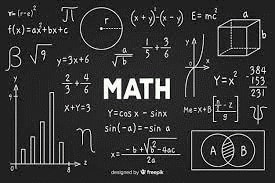Math

Math 6+ (2 semesters required)
This is a comprehensive sixth grade math course that also incorporates some of the seventh grade standards. This course emphasizes connections to prior learning about operations, mathematical thinking, conceptual understanding and discourse. Content is focused on these areas: 1) developing understanding ratio, rate and proportion and application in a variety of contexts; 2) extending understanding of the number system and operations to include rational numbers: fractions, decimals and negative numbers; 3) writing, interpreting, and using expressions and equations; 4) describing and summarizing numerical data sets; 5) reasoning about relationships among shapes to determine area, surface area and volume. District Adopted Curriculum: Glencoe Math Course 1 and 2
Math 7+ (2 semesters required)
The seventh grade general math program provides a transition from the basic skills learned in last year to the upper levels of specialized math found in high school programs. Students develop a personal number sense, demonstrate proportional reasoning skills, develop algebraic concepts, extend shape and dimension applications, receive instruction on basic geometry, and develop logical thinking skills. Throughout the course of study, students develop as mathematical problem solvers and learn to communicate mathematically through Mathematical Reasoning and Explanation problems. As students develop a strong foundation, they acquire self-confidence in mathematics, and make connections between mathematics and real life.
Eighth Grade Algebra I (2 semesters required) CADR This is a high school credit class. It is the culmination of middle school mathematics, and prepares students well for successful courses in high school. The fundamental purpose of this course is to formalize and extend the mathematics that students learned in the middle grades. The course focuses on five critical areas: (1) developing fluency writing, interpreting and translating between various forms of linear equations and inequalities and simple exponential functions, and using them to solve problems; (2) comparing and contrasting linear and exponential functions, translating between different representations, using function notation and interpreting arithmetic sequences as linear functions and geometric sequences as exponential functions; (3) using regression techniques to describe linear relationships quantitatively and making judgments about the appropriateness of linear models; (4) extending the laws of exponents to rational exponents, seeing structure in and creating quadratic and exponential expressions, and solving equations, inequalities and systems of equations involving quadratic expressions; and (5) comparing quadratic, linear and exponential functions to model phenomenon. They also identify the real solutions of quadratic equations as the zeroes of a related quadratic function and expand their experience to more specialized functions – absolute value, step and those that are piecewise-defined.
Math 7+ (2 semesters required)
The seventh grade general math program provides a transition from the basic skills learned in last year to the upper levels of specialized math found in high school programs. Students develop a personal number sense, demonstrate proportional reasoning skills, develop algebraic concepts, extend shape and dimension applications, receive instruction on basic geometry, and develop logical thinking skills. Throughout the course of study, students develop as mathematical problem solvers and learn to communicate mathematically through Mathematical Reasoning and Explanation problems. As students develop a strong foundation, they acquire self-confidence in mathematics, and make connections between mathematics and real life.
Eighth Grade Algebra I (2 semesters required) CADR This is a high school credit class. It is the culmination of middle school mathematics, and prepares students well for successful courses in high school. The fundamental purpose of this course is to formalize and extend the mathematics that students learned in the middle grades. The course focuses on five critical areas: (1) developing fluency writing, interpreting and translating between various forms of linear equations and inequalities and simple exponential functions, and using them to solve problems; (2) comparing and contrasting linear and exponential functions, translating between different representations, using function notation and interpreting arithmetic sequences as linear functions and geometric sequences as exponential functions; (3) using regression techniques to describe linear relationships quantitatively and making judgments about the appropriateness of linear models; (4) extending the laws of exponents to rational exponents, seeing structure in and creating quadratic and exponential expressions, and solving equations, inequalities and systems of equations involving quadratic expressions; and (5) comparing quadratic, linear and exponential functions to model phenomenon. They also identify the real solutions of quadratic equations as the zeroes of a related quadratic function and expand their experience to more specialized functions – absolute value, step and those that are piecewise-defined.
Geometry: (2 semesters optional) CADR It is common for Stella 8th graders to take Geometry online in 8th grade and/or during the summer before 9th grade. Some students who prefer an in-person teacher experience, take geometry in 9th grade concurrently with Algebra 2. These choices must be approved by the student's LWSD High School/Middle School Counselor, as well as submitting a completed "Appendix C-Request for Out of District Credit" form before starting. Sign up for the class with BYU Independent Study High School Courses (Part 1 GEOM 041, and Part 2 GEOM 043) or other LWSD approved provider on the OSPI list.

 Stella Schola Middle School
Stella Schola Middle School